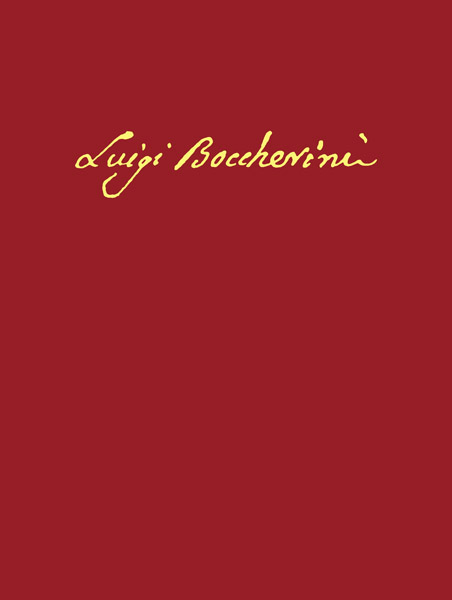edited by Fulvia Morabito and Massimiliano Sala, Bologna, Ut Orpheus Edizioni, 2022 [Opera Omnia – Vol. XIV], ISMN: 979-0-2153-2612-5, ISBN: 978-88-8109-514-8, BCE 10.
Under the definition ‘Symphonie concertante’ variously named works and designations may coexist: ‘Concerto for two, three… or more instruments’, ‘Concertone’, ‘Fantaisie concertante’, ‘Simphony for large orchestra’, etc. Concerning the form, such a genre broadly suggests the baroque concerto grosso, characterized by the juxtaposition of the concertino — that is the group of soloists (usually strings) — with the orchestra, functioning as ripieno.
The symphonie concertante is usually a major-key work of brilliance, in which sonic masses engage in dialogue with a soloistic ensemble that may include two violins, strings, or winds, or unusual combinations of instruments drawn from the strings, winds, keyboard, or plucked-string instruments, sometimes consisting of an ensemble of two, three or four performers, and occasionally up to seven or nine musicians. The soloists are responsible for handling the thematic material and the cadences whereas the orchestra serves as a plain accompaniment. Such a genre mainly flourished between 1770 and 1830.
The rapid success, as well as the early decadence of the genre, are reflected in the changes in the system of production and reception of music encompassing the transition from the xviii to the xix century, a system where patronage was gradually replaced by the free market. By allowing several soloists to play at the same time, the sinfonia concertante gave a local spotlight to many performers who, unable or unwilling to aspire to an international career, exploited their talent to earn a living outside the often-narrow confines of their patronage.
Such exposure also affected the performers’ teaching activity, stimulating the dissemination of music production and the importance of the role of composers within the publishing market. This was, however, a period in which the figure of the entrepreneur musician — usually seen as a histrionic soloist, a travelling virtuoso, aware of his uniqueness as an artist and the bearer of high social status — was yet to come. As this process gained currency, especially during the nineteenth century, the genre of the symphonie concertante declined1.
Boccherini wrote fifteen works which can be listed under the genre of the symphonie concertante; however, neither Boccherini nor his publishers (except that for G 499) marked them as such.
Fulvia Morabito is currently President of the Centro Studi Opera Omnia Luigi Boccherini and President of the scientific committee of the Italian National Edition of Luigi Boccherini’s Complete Works (Ut Orpheus Edizioni). Graduated in musicology from the University of Pavia, she received a M.Mus in piano from the Conservatory Luigi Boccherini, Lucca). In 1994 she joined the editorial staff of the Stichting-Fondazione Pietro Antonio Locatelli (Amsterdam-Cremona) as editor of the Locatelli Opera Omnia. She is a member of the Advisory Board of the Francesco Geminiani’s Opera Omnia (Ut Orpheus Edizioni) and General Editor of the series Monumenta Musica Europea and Studies on Italian Music History (Brepols Publishers). She is also a founder of Ad Parnassum. A Journal of Eighteenth- and Nineteenth-Century Instrumental Music and an editor of the series Ad Parnassum Studies (Ut Orpheus Edizioni). She published 2 monographs on P.A. Locatelli (2009 and 2018) and another on La Romanza vocale da camera in Italia (1997), critical editions, edited volumes, articles, and dictionaries entries.
Massimiliano Sala is currently Vice President of the Centro Studi Opera Omnia Luigi Boccherini and President of the Italian Institute of Applied Musicology. Graduated in musicology from the University of Pavia (Italy), he received a M.Mus in piano from the Conservatory of Cesena. He is President of the Italian National Edition of Pietro Antonio Locatelli’s Complete Works, and member of the Board of the Italian National Edition of Muzio Clementi’s Complete Works (Secretary Treasurer) and the Italian National Edition of Luigi Boccherini’s Complete Works. He is also a founder of Ad Parnassum. A Journal on Eighteenth- and Nineteenth-Century Instrumental Music, General Editor of the series ‘Contemporary Composers’, ‘Music, Science and Technology’ (Brepols Publishers) and Quaderni Clementiani (Ut Orpheus Edizioni), and member of the editorial committee of the series Boccherini Studies (Ut Orpheus Edizioni), His publications include books, critical editions, journal articles and book chapters on eighteenth- to twentieth-centuries music, dictionary entries for Die Musik in Geschichte und Gegenwart 2 and Oxford Bibliographies Online (OUP).












